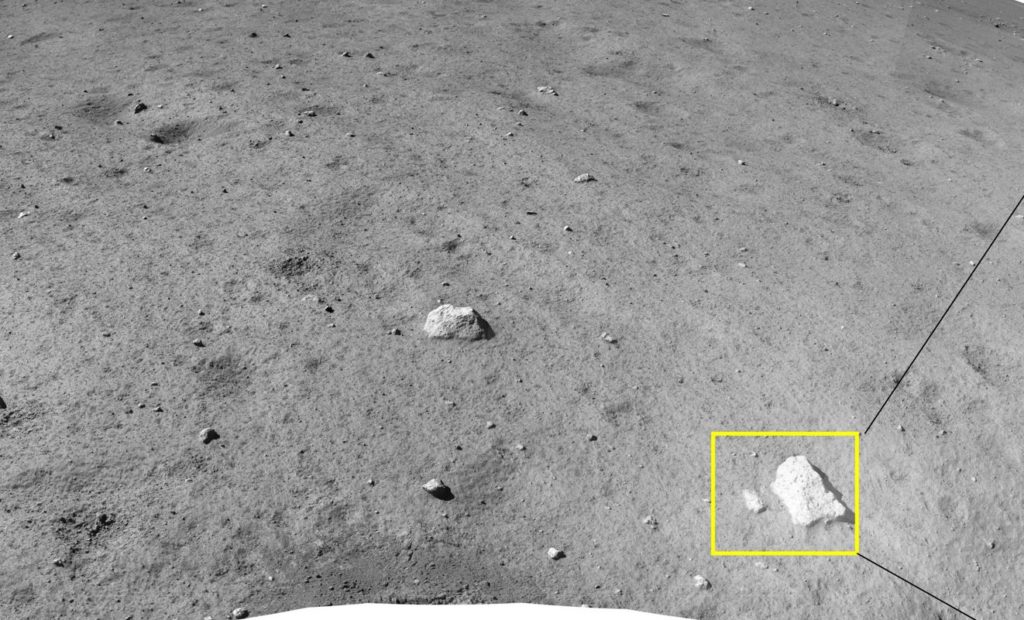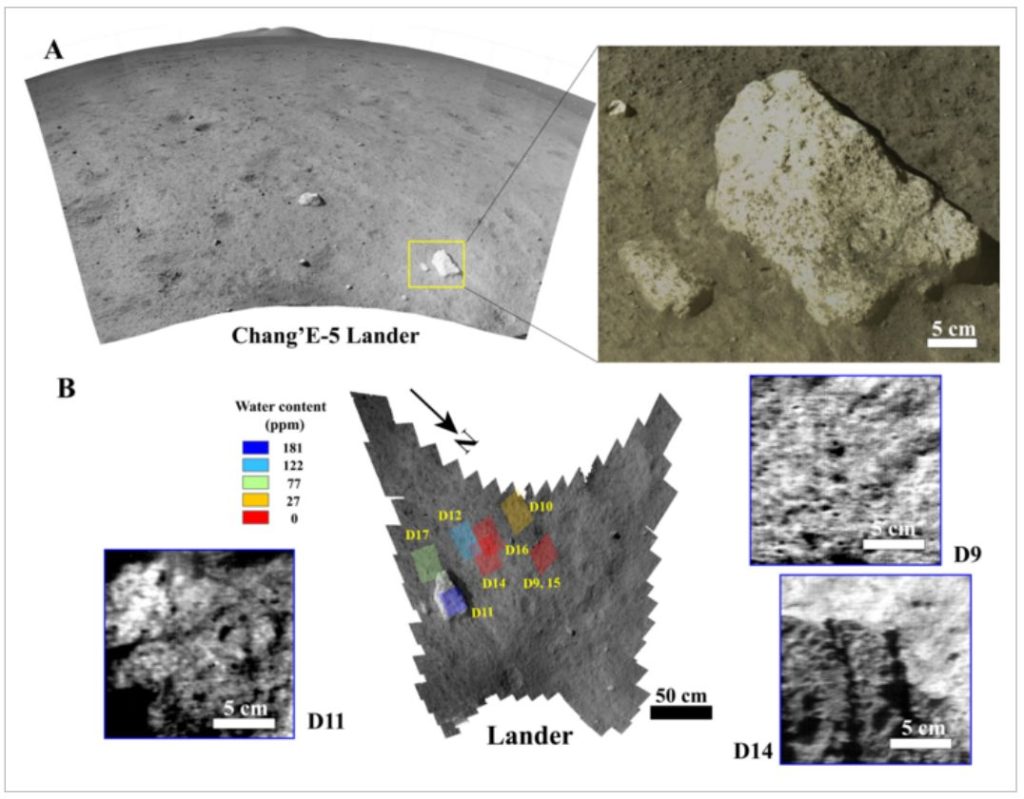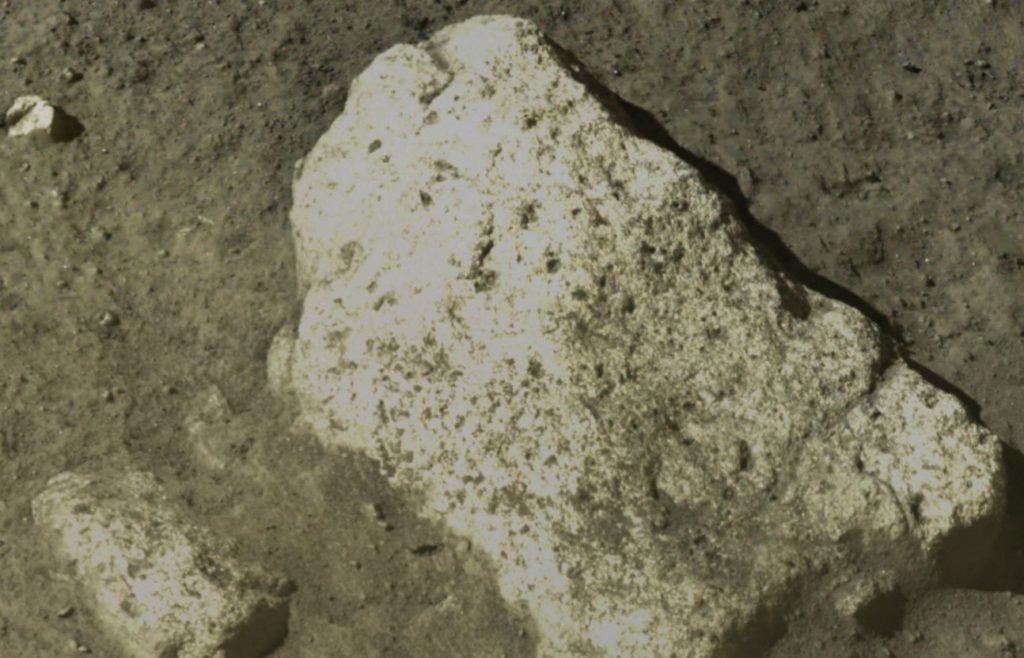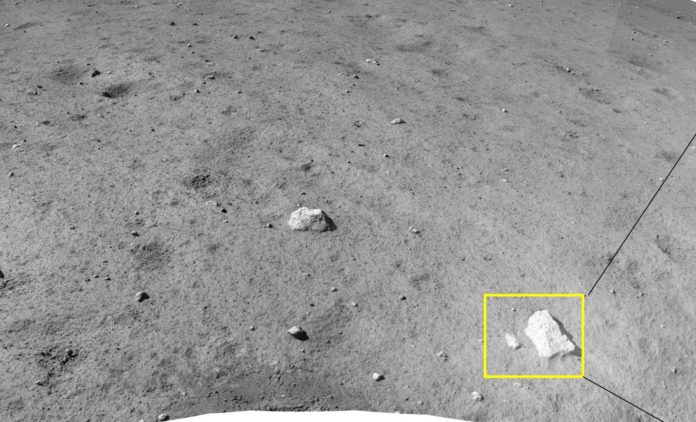Study shows first evidence of in-situ detection of water on the Moon.
Profs. LIN Yangting and LIN Honglei of the Chinese Academy of Sciences’ Institute of Geology and Geophysics (IGGCAS) discovered water signals in reflectance spectral data from the lunar surface acquired by the Chang’E-5 lander, providing the first evidence of in-situ detection of water on the Moon.
The existence of water (as hydroxyl and/or H2O) on the Moon has been demonstrated by several orbital observations and sample measurements done over the last decade. On the other hand, no in-situ observations have ever been carried out on the moon’s surface.
Chang’E-5 landed on one of the Moon’s youngest mare basalts in a mid-high latitude and returned 1,731 g of samples. The lunar mineralogical spectrometer (LMS) onboard the lander, however, performed spectral reflectance measurements of the regolith and a rock before sampling and returning the lunar soil to Earth, offering an unprecedented chance to assess lunar surface water.

Using spectral characteristics at ~3 μm, water (OH/H2O) can be detected. Thermal emission from the hot lunar surface, however, will drastically change and hide spectral characteristics above 2 μm.
Therefore, to correct the LMS spectra, scientists used a thermal correction model. Following this correction, the Chang’E-5 landing location noticed undeniable spectral absorptions at 2.85 μm.

The quantitative spectrum study shows that the lunar soil at the landing site has less than 120 ppm of water, which is mostly due to solar wind implantation. This is in accordance with the preliminary results of the Chang’E-5 samples that were returned to the lab.
A light and vesicular rock, on the other hand, showed substantially stronger absorption at 2.85 m, equal to an estimated 180 ppm of water, implying the presence of another water source from the lunar deep.

The findings of compositional and orbital remote sensing analysis indicate that the rock was extracted from an older basaltic unit and thrown to the Chang’E-5 landing site. As a result, the lower water content of the soil vs the higher water content of the rock fragment, shows that degassing of the mantle reservoir beneath the Chang’E-5 landing site took place.
This discovery is consistent with the extended volcanic eruptions in the Procellarum KREEP (potassium, rare earth elements, phosphorus) Terrain region, and it also provides critical geological background for the examination of the returned Chang’E-5 samples.
Source: 10.1126/sciadv.abl9174
Image Credit: LIN Honglei
You were reading: Chang’E-5 lander detects water on moon
